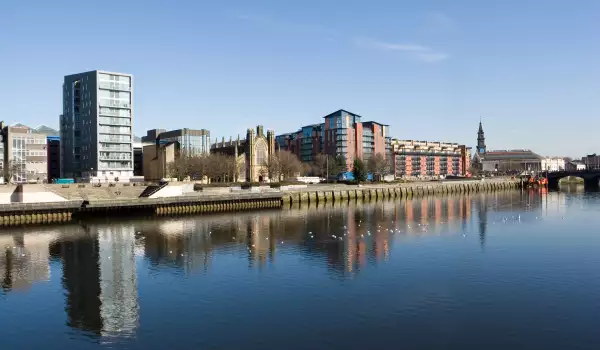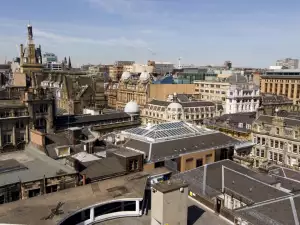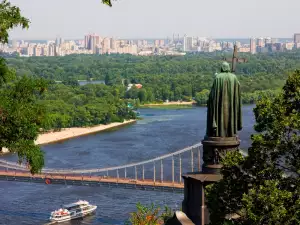Glasgow

Glasgow is the capital of Scotland and is the largest city in the country, it also ranks third after London and Birmingham in the most numerous population of the whole island of Great Britain. Glasgow is situated in the western part of Central Scotland. In the city passes the Clyde and only 32 km northwest of it Glasgow is its mouth.
The emergence of the original settlement site of Glasgow attributed to the Christian missionary of St. Mangou. There is a legend that tells how in 543, he founded a monastery on the river Molendinar, where today St. Mangou is located. Legend has records from around 1185 by monks from the Farnes and Jocelyn but this has yet to be confirmed by any historical source, however, the traditional St. Mangou is considered the patron saint of Glasgow, and his effigy is a fundamental part of the city emblem.
Details of the settlement of the land around what is now Glasgow has been since the Neolithic era. Later the territory of modern Glasgow is populated by the Celtic tribes. For the period 142-144, the Roman invasion of Britain and the conquest of the local areas was accompanied by raising the coast of Scotland to another fort of defense, etc. It was built to protect the British raids on the northern tribes. And to this day on the outskirts of Glasgow you can see the remains and ruins of the wall.

In the Middle Ages to late 12th century, Glasgow was one of the important religious centers in Britain and its population increased to over 1500 people. In 1136 in the presence of King David I they officially consecrated the cathedral, erected by the local Church St. Mangou. The church suffered a fire, after which the cathedral was rebuilt and opened again in 1197. In the next two centuries it had seen continuous repairs and reconstructions.
Glasgow is one of the main centers of UK football. Fans of the two major teams, Celtic and Rangers, have long been known for their football and passionate love for their teams. Glasgow has one of the biggest football stadiums - Hampden Park.
Since the beginning of last century, Glasgow has radically transformed from an industrial center into a modern and beautiful European city with an interesting and unusual architecture. In Glasgow there are no ancient historical monuments such as castles, fortresses, etc., but at the expense of this there are many impressive buildings with many separate styles. Among the landmarks of the city are Chamber of Commerce (Trades House) with its Ionic columns and Venetian windows.
Close to it is the non-standard, but elegant tower, which has the shape of a square - Hutchesons Hall. George Gilbert Scott was the architect of the University of Glasgow, which is a perfect example of Scottish architecture in which borrows some motifs from French art from the 14th century.
Glasgow won the recognition that it is now a significant cultural center, thanks mainly to the many galleries in the city. These include galleries and museums of Kelvingrove, Art Gallery on the University of Glasgow and Galleries McLellan that can satisfy the taste of any art lover.
The most pleasant is to visit Glasgow is in the summer months when the temperature is around 20 degrees.







